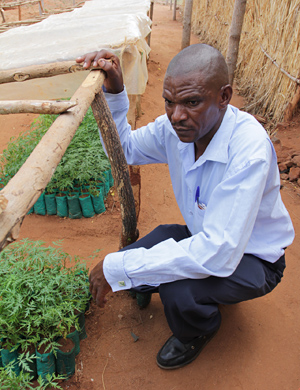Think Globally, Act “Locally Controlled”

 Diji Chandrasekharan Behr, a Natural Resource Economist at PROFOR, sent in this blog from the UNFF-10 Conference in Istanbul.
Diji Chandrasekharan Behr, a Natural Resource Economist at PROFOR, sent in this blog from the UNFF-10 Conference in Istanbul.
At the ongoing UNFF 10 meetings in Istanbul, discussions have focused on how to finance sustainable forest management. While the UNFF 10 discussions are at an international level, the questions asked are similar to the ones posed by small forest holders and communities: How to obtain financing for sustainable management of their community forest, forest farms or woodlot?
Locally controlled forestry presents a real opportunity for reducing poverty and sharing prosperity. It promotes inclusive green growth, creates jobs and, when implemented properly, results in sustainable forest resource use. We have seen evidence of this in different countries like Mexico, Tanzania, Albania, and parts of Central America
The challenge of financing locally controlled forest activities is an interesting one. There is no shortage of investors looking for opportunities to invest in the sector. There is also no shortage of investable locally controlled forest activities – whether it is in biomass briquette production in Nepal, community-based timber production in Bolivia, paying for forest carbon in Albania, or wood pellet production in Canada.
So why are we not seeing more investments in locally controlled forestry? Some of the reasons include high transaction costs, investment requirements that are too small for many investors, and unclear rights to resources. There are also some less obvious reasons: private investors and local stakeholders do not always understand each other's requirements prior to committing to an investment; public investment has in some cases crowded out good private investors by subsidizing small holders, making it hard for the private sector to generate a profit; and the type of investment required is sometimes not suitable for private investors (for example, clarifying tenure or rights to the resources, capacity building, facilitating associations, or changing the regulatory framework).
So is it futile to promote investing in locally controlled forestry? The UNFF 10 side event on Investing in Locally Controlled Forestry suggested otherwise. The recently released Guide to Investing in Locally Controlled Forestry shows how local communities and individuals can make their needs more attractive to investors, and offers insights for investors on engaging with local stakeholders. As one of the panelists said, the guide is “a Rosetta Stone for local forest stakeholders and investors” helping them to understand each other and speak a common language about investments. The guide distinguishes between enabling investments that are not focused on profit making (such as investments in capacity building, technology, or policy reform) versus investments that are suited for generating a return. It also provides a roadmap for investing in locally controlled forestry.
Investing in locally controlled forestry is one of the solutions to the global challenge of financing sustainable forest management, and has real potential. About 80% of forest enterprises are small, and the area under local control has been increasing in the recent past. Small and medium forest enterprises are the emerging private sector and an investment opportunity that shouldn’t be missed.








